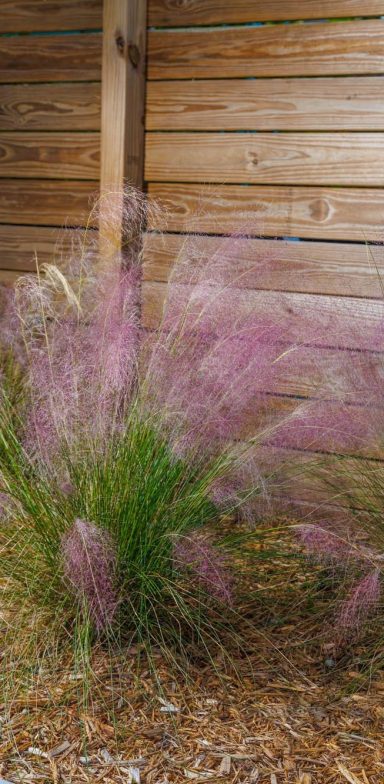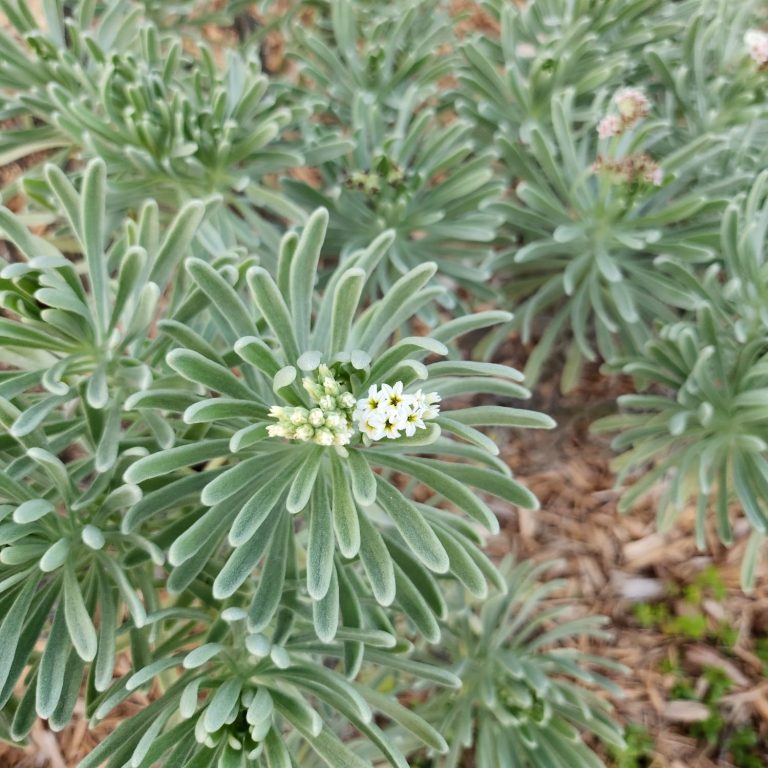

The Ethereal Elegance of Muhly Grass
Muhlenbergia capillaris
Few plants evoke the same sense of wonder as muhly grass (Muhlenbergia capillaris). With its dreamy plumes of pink and purple that dance in the golden light of fall, this native ornamental grass transforms ordinary landscapes into living works of art. Its delicate, airy texture creates a feeling of movement and serenity, inviting you to pause and connect with nature's quiet beauty.
Why Choose Muhly Grass?
- Low Maintenance: Once established, muhly grass is drought-tolerant and requires minimal care, making it perfect for sustainable landscapes.
- Adaptable: It grows well in a variety of soils, from sandy to slightly alkaline, and thrives in full sun to partial shade.
- Wildlife-Friendly: Muhly grass provides shelter for small animals and attracts pollinators like butterflies, enhancing biodiversity.
- Erosion Control: Its dense root system helps stabilize soil, making it a great choice for slopes or areas prone to erosion.
Whether you're designing a private garden or a community space, muhly grass is a versatile, eco-friendly choice that never goes out of style.
📸 Share your muhly grass moments on social media with the hashtag #3o5gardens or reach out to us for more tips on incorporating native plants into your Miami landscape!
— Daniella Fernandez
3o5 Gardens
January 22, 2025


A Coastal Native Powerhouse
Sea Lavender, Argusia gnaphalodes
If you're looking for a tough, beautiful, and ecologically valuable plant for your coastal landscape, Sea Lavender (Argusia gnaphalodes), also known as Beach Heliotrope, is a perfect choice. This native shrub is a staple in Florida’s dune ecosystems, helping to stabilize sandy soils while providing vital resources for pollinators and beneficial insects.
In my experience, Sea Lavender attracts an incredible variety of pollinators and beneficial insects. I’ve seen butterflies like the Gulf Fritillary, Monarch, and White Peacock frequently fluttering around its lavender-colored blooms. Beyond pollinators, I’ve noticed ladybugs crawling through the foliage, likely feasting on aphids, and lacewing larvae hunting down other small pests. I’ve also seen predatory wasps patrolling the plant, helping to keep caterpillar numbers in check.
Sea Lavender thrives in full sun and sandy, well-draining soil, making it ideal for coastal landscapes. It is highly salt- and drought-tolerant, requiring minimal water once established, though occasional deep watering during extended dry periods can promote healthier growth. This hardy shrub needs little maintenance, but light pruning can help maintain its shape and encourage new growth. Its resilience makes it perfect for xeriscaping, dune stabilization, and pollinator gardens, where it provides both beauty and ecological benefits with little effort!
— Daniella Fernandez
3o5 Gardens
January 29, 2025
© Copyright. All rights reserved.
We need your consent to load the translations
We use a third-party service to translate the website content that may collect data about your activity. Please review the details in the privacy policy and accept the service to view the translations.
